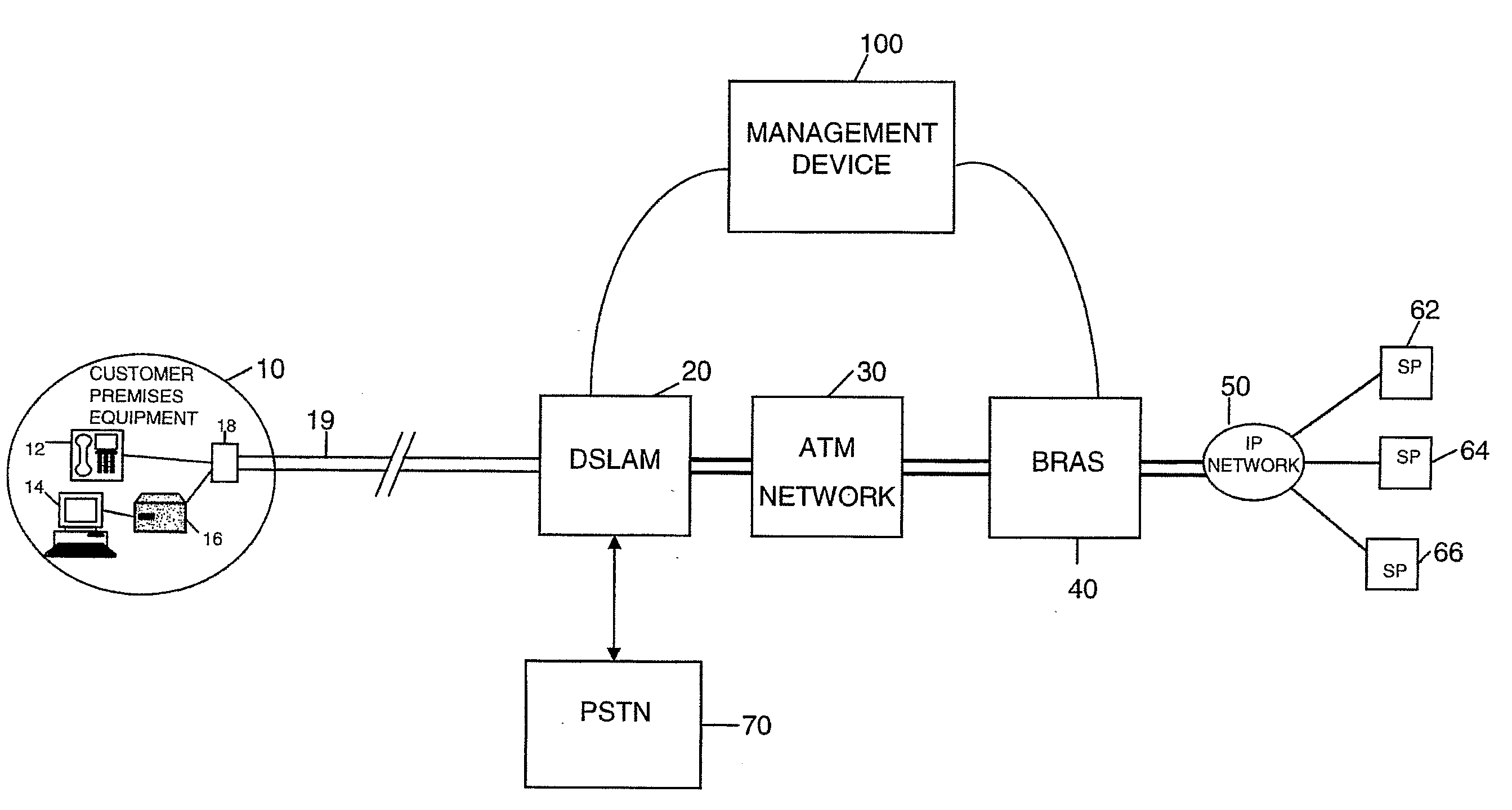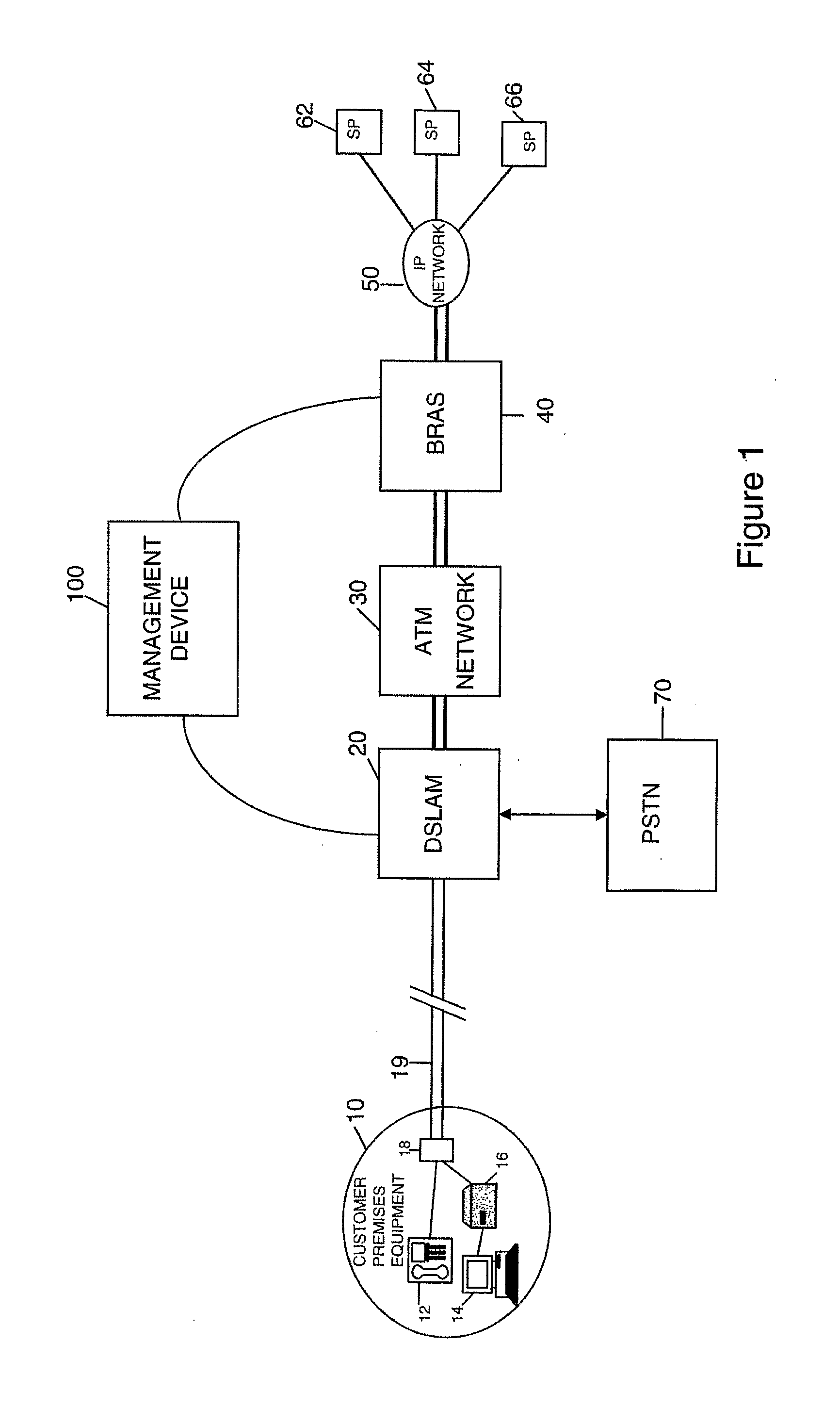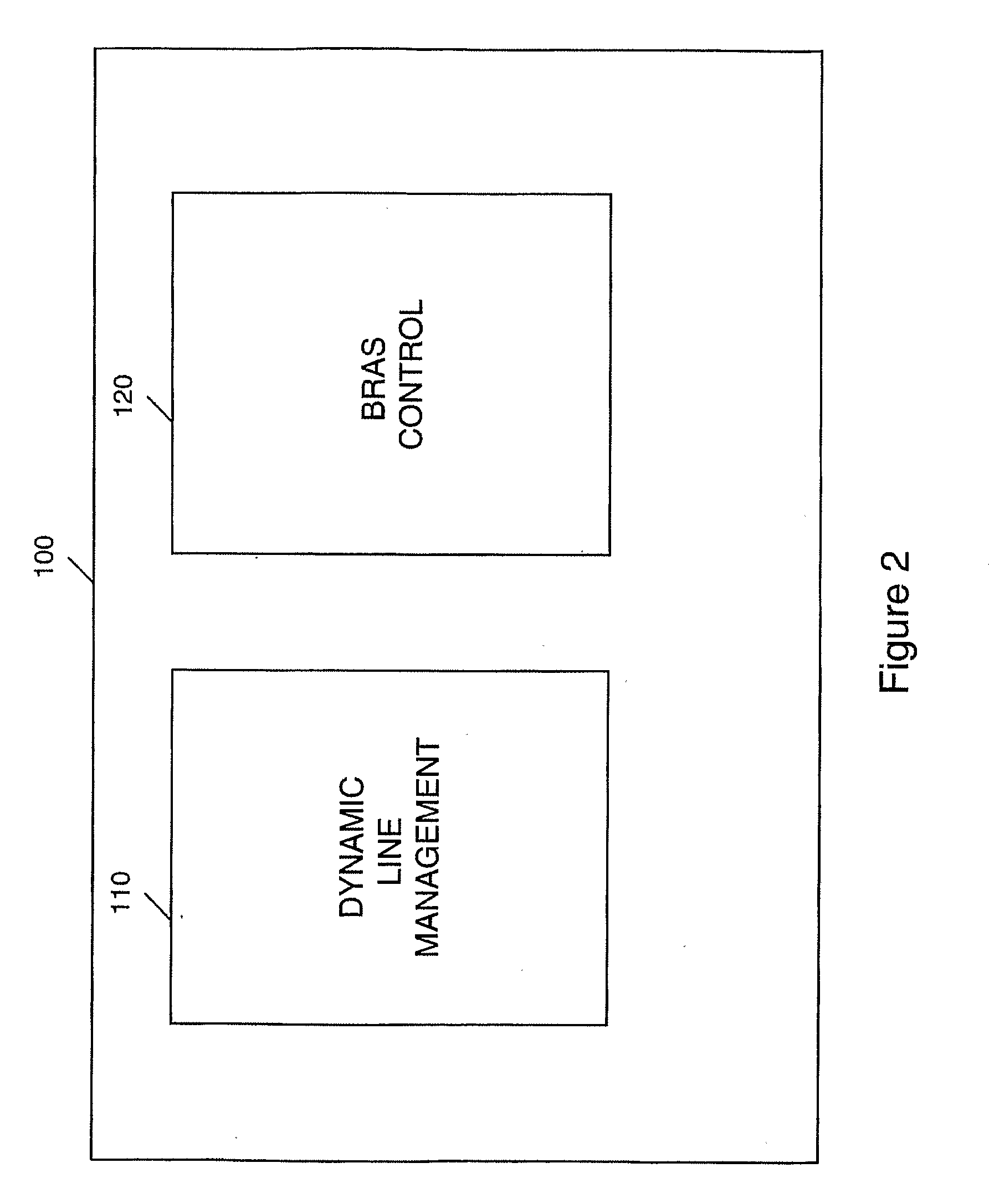Data communications
- Summary
- Abstract
- Description
- Claims
- Application Information
AI Technical Summary
Benefits of technology
Problems solved by technology
Method used
Image
Examples
Embodiment Construction
[0029]Referring to FIG. 1, the embodiment described below uses a management device 100 to perform two principal functions, namely Broadband Access Remote Server (BRAS) provisioning and Dynamic Line Management (DLM). BRAS provisioning is described very briefly in this application, for the sake of completeness, but is described in greater detail in co-pending International patent applications GB2006 / 002826 and GB2006 / 002818. Regarding the DLM function 110, this is used in the embodiment to control the downstream speed, i.e. data rate, of the ADSL connections controlled by the management device 100 to achieve stability and so minimise the need for re-synchronisations caused by noise on the connection.
[0030]In overview, the role of the DLM function 110 of the management device 100 is to ensure that the ADSL connections are as stable as possible, i.e. with as few errors and, in particular, as few re-synchronisations as possible whilst still providing a good connection for the end user in...
PUM
 Login to View More
Login to View More Abstract
Description
Claims
Application Information
 Login to View More
Login to View More - R&D
- Intellectual Property
- Life Sciences
- Materials
- Tech Scout
- Unparalleled Data Quality
- Higher Quality Content
- 60% Fewer Hallucinations
Browse by: Latest US Patents, China's latest patents, Technical Efficacy Thesaurus, Application Domain, Technology Topic, Popular Technical Reports.
© 2025 PatSnap. All rights reserved.Legal|Privacy policy|Modern Slavery Act Transparency Statement|Sitemap|About US| Contact US: help@patsnap.com



